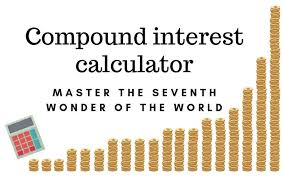Unlock the secrets to smart financial decision-making with our comprehensive guide, featuring the Present Value Calculator (PV Calculator) . This indispensable tool will help you assess the true value of your investments, empowering you to make well-informed choices for a secure financial future. Don’t miss out on the opportunity to optimize your wealth; explore our guide and take charge of your finances today.Let us explore in details like Present value,PV Annuity Formula (PV Formula) etc.
Present Value Calculator
What is Present Value & Net Present Value?
As an investor or business owner, understanding financial concepts like present value (PV) and net present value (NPV) is crucial for making informed decisions about investments, projects, and cash flows. In this article, we’ll explain what present value and net present value are, how they are calculated, and how they can help you make more profitable financial decisions.
What is Present Value?
Present value (PV) is a financial concept that calculates the current value of future cash flows, taking into account the time value of money. In other words, it helps you determine how much money you would need today to receive a future cash flow.
How to calculate present value ?
The formula for present value is as follows:
PV = FV / (1 + r)^n
Where:
- PV = Present Value
- FV = Future Value
- r = Discount Rate
- n = Number of Periods
The discount rate is the interest rate used to discount future cash flows to their present value. The number of periods is the number of years or other time units until the future cash flow is received.
For example, let’s say that you are expecting to receive $1,000 in two years. If the discount rate is 5%, the present value of that future cash flow would be:
PV = $1,000 / (1 + 0.05)^2 = $907.03
This means that the present value of the $1,000 cash flow in two years is $907.03 today, assuming a 5% discount rate.
What is Net Present Value?
Net present value (NPV) is a financial concept that calculates the present value of all future cash flows associated with a particular investment or project, taking into account the time value of money and the initial investment. It helps you determine whether a particular investment is profitable or not.
The formula for net present value is as follows:
NPV = PV of Cash Inflows – PV of Cash Outflows
Where:
- PV of Cash Inflows = Present Value of all Future Cash Inflows
- PV of Cash Outflows = Present Value of Initial Investment and all Future Cash Outflows
If the net present value is positive, the investment is considered profitable, whereas if it is negative, the investment is considered unprofitable.
For example, let’s say that you are considering investing $10,000 in a project that is expected to generate $2,000 in cash inflows for the next five years. If the discount rate is 8%, the net present value of the project would be:
NPV = PV of Cash Inflows – PV of Cash Outflows NPV = [$2,000 / (1 + 0.08)^1] + [$2,000 / (1 + 0.08)^2] + [$2,000 / (1 + 0.08)^3] + [$2,000 / (1 + 0.08)^4] + [$2,000 / (1 + 0.08)^5] – $10,000 NPV = $8,084.34 – $10,000 NPV = -$1,915.66
This means that the project would result in a net loss of $1,915.66, assuming a 8% discount rate.
Present value and net present value are important financial concepts that help investors and business owners make informed decisions about their investments, projects, and cash flows.
Other important present value calculations
In this article, we’ll explore some of these concepts, including the net present value, internal rate of return, and annuity.
Net Present Value:
Net present value (NPV) is a concept that compares the present value of expected cash inflows to the present value of expected cash outflows. The formula for calculating the net present value is:
NPV = PV of Cash Inflows – PV of Cash Outflows
If the NPV is positive, it indicates that the investment is profitable, while a negative NPV indicates that the investment is not profitable. A zero NPV means that the investment is neither profitable nor unprofitable.
Internal Rate of Return:
The internal rate of return (IRR) is the discount rate that makes the NPV of an investment equal to zero. It is the expected rate of return that an investment will generate over its lifespan. The IRR is a useful tool for comparing different investment opportunities, and it helps investors understand the opportunity cost of investing in a particular project.
The formula for calculating the internal rate of return is:
NPV = 0 = CF0 + CF1/(1+IRR) + CF2/(1+IRR)^2 + … + CFn/(1+IRR)^n
Where: CF0 = Initial Cash Outflow CF1 to CFn = Expected Cash Inflows n = Number of Periods
Annuity:
An annuity is a series of equal payments or receipts made at regular intervals. The present value of an annuity is the value today of a stream of payments or receipts that are expected in the future. The formula for calculating the present value of an annuity is:
PV of Annuity = C * [1 – 1 / (1 + r)^n] / r
Where: C = Regular Payment r = Discount Rate n = Number of Periods
The present value of an annuity helps investors determine the worth of a series of payments or receipts that will occur in the future. It’s a valuable tool for understanding the value of long-term investments, such as retirement plans or mortgages.
How to use present value for investing?
Here’s how to use present value for investing:
Step 1: Determine the Future Cash Flows
The first step is to determine the future cash flows that you expect to receive from the investment. For example, if you’re considering buying a bond, you need to know the amount of interest you’ll receive each year and the amount you’ll receive at maturity.
Step 2: Determine the Discount Rate
The discount rate is the rate of return required to compensate for the time value of money. It takes into account factors such as inflation and the riskiness of the investment. The discount rate you choose will depend on your personal risk tolerance and the specific investment you’re considering.
Step 3: Calculate the Present Value
Once you have determined the future cash flows and the discount rate, you can calculate the present value of the investment. The formula for present value is:
Present Value = Future Cash Flow / (1 + Discount Rate) ^ Number of Periods
For example, if you expect to receive $1,000 in two years and the discount rate is 5%, the present value would be:
Present Value = $1,000 / (1 + 0.05) ^ 2 Present Value = $907.03
This means that if you could invest $907.03 today at a 5% interest rate, it would be worth $1,000 in two years.
Step 4: Compare Present Values
By calculating the present value of different investment opportunities, you can compare the current value of each investment and make a more informed decision. The investment with the highest present value is the most attractive.
Step 5: Consider Other Factors
While present value is an important tool for evaluating investments, it’s not the only factor to consider. You should also consider factors such as the riskiness of the investment, the expected return, and the potential for growth.
How to know if a present value of an investment is good or bad?
Here’s how to know if the present value of an investment is good or bad:
Step 1: Determine the Expected Cash Flows
The first step is to determine the expected cash flows that the investment will generate. For example, if you’re considering buying a bond, you need to know the amount of interest you’ll receive each year and the amount you’ll receive at maturity.
Step 2: Determine the Discount Rate
The discount rate is the rate of return required to compensate for the time value of money. It takes into account factors such as inflation and the riskiness of the investment. The discount rate you choose will depend on your personal risk tolerance and the specific investment you’re considering.
Step 3: Calculate the Present Value
Once you have determined the expected cash flows and the discount rate, you can calculate the present value of the investment. The formula for present value is:
Present Value = Future Cash Flow / (1 + Discount Rate) ^ Number of Periods
For example, if you expect to receive $1,000 in two years and the discount rate is 5%, the present value would be:
Present Value = $1,000 / (1 + 0.05) ^ 2 Present Value = $907.03
This means that if you could invest $907.03 today at a 5% interest rate, it would be worth $1,000 in two years.
Step 4: Compare the Present Value to the Initial Investment
To determine whether the investment is good or bad, you need to compare the present value to the initial investment. If the present value is higher than the initial investment, the investment is good. If the present value is lower than the initial investment, the investment is bad.
Step 5: Consider Other Factors
While the present value is an important tool for evaluating investments, it’s not the only factor to consider. You should also consider factors such as the riskiness of the investment, the expected return, and the potential for growth.
In conclusion, the present value is a powerful tool for evaluating investment opportunities. By calculating the present value of an investment, you can determine whether it’s worth investing in.
Present Value Calculator (PV Calculator)
In the realm of finance and investment, understanding the time value of money is paramount. The concept of Present Value (PV) plays a pivotal role in this, helping individuals and businesses make informed financial decisions. The Present Value Calculator (PV Calculator) is a powerful tool that simplifies the process of evaluating the worth of future cash flows in today’s terms. In this article, we’ll explore the importance of the PV Calculator and the PV Annuity Formula (PV Formula) that underpins it.
The PV Annuity Formula (PV Formula):
The PV Formula is a mathematical equation used to calculate the present value of future cash flows, particularly those of an annuity. It allows you to determine how much a series of future payments or receipts are worth in today’s terms. For an ordinary annuity, the PV Formula is expressed as:
PV = PMT x [(1 – (1 + r)^-n) / r]
Where:
- PV is the present value of the annuity.
- PMT represents the regular payment received or made.
- r is the interest rate per period.
- n is the number of periods.
Utilizing the Present Value Calculator (PV Calculator):
The PV Calculator streamlines the process of determining the present value of future cash flows. Here’s how you can use it:
Input Information: Gather data on the future cash flows or payments (PMT), the interest rate per period (r), and the number of periods (n).
Select Discounting Rate: Specify the discount rate, which is typically the interest rate that represents the time value of money.
Calculate: Enter the data into the PV Calculator, and it will provide you with the present value of the future cash flows in today’s terms.
The Benefits of a Present Value Calculator (PV Calculator):
Precision: The PV Calculator ensures accurate calculations, eliminating errors that may occur when using the PV Formula manually.
Time Efficiency: Performing these calculations by hand can be time-consuming. A calculator streamlines the process, delivering quick and reliable results.
Visualization: Many PV Calculators provide charts or graphs to help visualize how the present value changes as you adjust the parameters.
Understanding the present value of future cash flows is essential in making sound financial decisions, whether it’s evaluating investments, loans, or long-term financial planning. The Present Value Calculator (PV Calculator) and the PV Formula are indispensable tools that empower you to make well-informed choices. By using them, you can accurately assess the current worth of future payments or receipts, ensuring that your financial decisions are grounded in a strong understanding of the time value of money. Whether you’re an investor, a business owner, or someone planning for the future, these tools can help you maximize your financial potential and create a more secure financial outlook.
FAQ
Q: What is present value?
A: Present value is the current value of a future sum of money or cash flow, discounted by a certain interest rate. It is used to determine the value of future payments, investments, and debts.
Q: How is present value calculated?
A: The formula for present value is: Present Value = Future Cash Flow / (1 + Discount Rate) ^ Number of Periods. This formula takes into account the amount of the future cash flow, the discount rate, and the number of periods until the cash flow is received.
Q: What is the discount rate?
A: The discount rate is the rate of return required to compensate for the time value of money. It takes into account factors such as inflation and the riskiness of the investment. The discount rate you choose will depend on your personal risk tolerance and the specific investment you’re considering.
Q: Why is present value important?
A: Present value is important because it allows investors to determine the value of future payments, investments, and debts in today’s dollars. By calculating the present value of a future cash flow, investors can make better investment decisions and determine whether an investment is worth pursuing.
Q: What is the difference between present value and future value?
A: Present value is the current value of a future cash flow, while future value is the value of an investment at a future point in time. Present value takes into account the time value of money, while future value does not.
Q: How does the time value of money affect present value?
A: The time value of money refers to the fact that money is worth more today than it will be in the future, due to factors such as inflation and the opportunity cost of not investing the money. Present value takes into account the time value of money by discounting future cash flows to their current value.
Q: What is the relationship between interest rates and present value?
A: The discount rate used to calculate present value is typically based on an interest rate. As interest rates increase, the discount rate used to calculate present value will also increase, which will decrease the present value of future cash flows. As interest rates decrease, the discount rate used to calculate present value will also decrease, which will increase the present value of future cash flows.

Present Value Calculator – PV Calculator – PV Formula – PV Annuity Formula
Legal Notices and Disclaimer
All Information contained in and produced by the ModernCalculators.com is provided for educational purposes only. This information should not be used for any Financial planning etc. Take the help from Financial experts for any Finace related Topics. This Website will not be responsible for any Financial loss etc.





